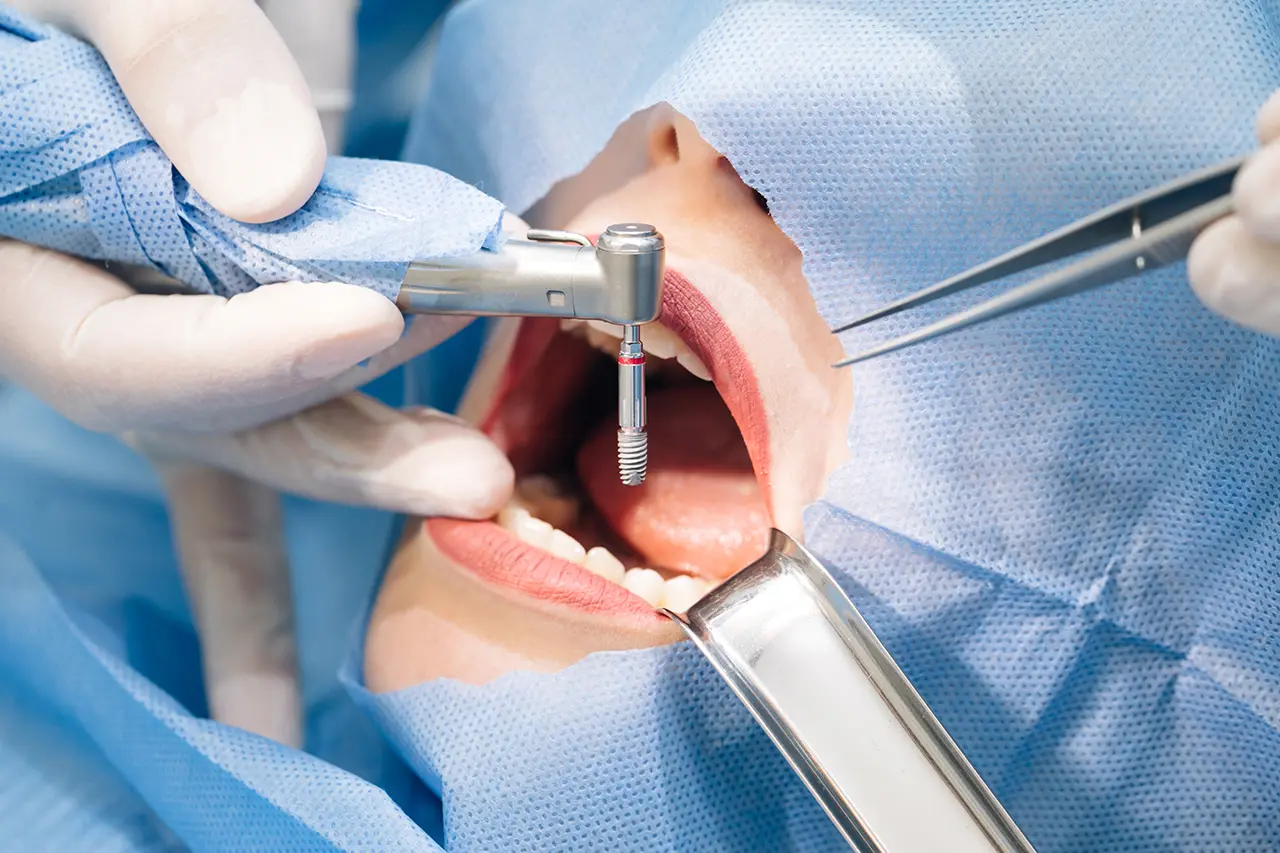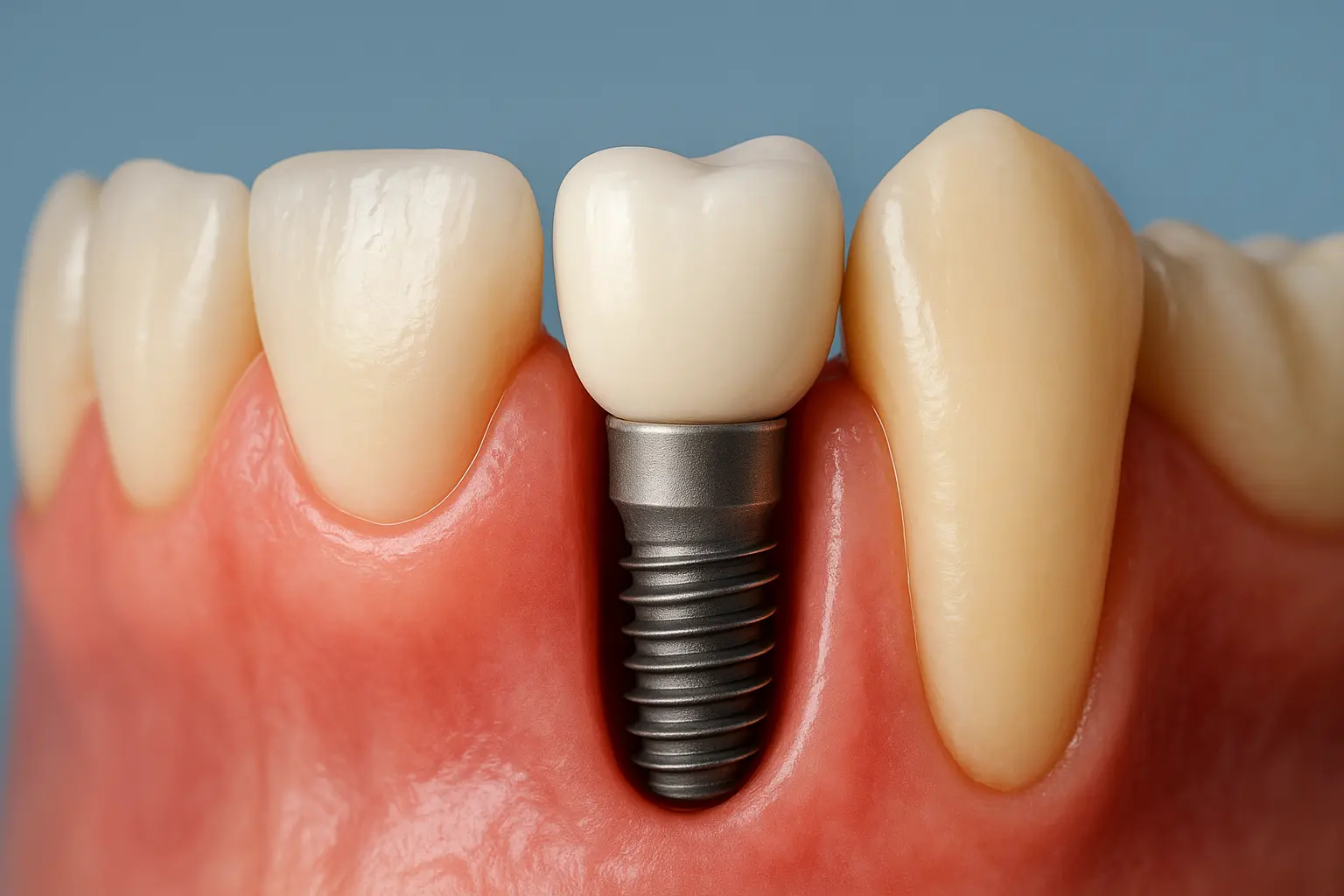
Missing Lateral Incisor Teeth - Comprehensive Guide [Case Study]
Congenitally missing maxillary lateral incisors, also known as maxillary lateral incisor agenesis, is a common dental anomaly where one or both of the upper lateral incisors fail to develop. This condition affects approximately 2% of the population and can have significant implications for both dental function and aesthetics.
The absence of these teeth can lead to several challenges:
- Aesthetic Concerns: The lateral incisors play a crucial role in the appearance of the smile. Their absence can result in noticeable gaps, affecting the harmony and balance of the dental arch.
- Functional Issues: Missing lateral incisors can disrupt the alignment and occlusion of adjacent teeth, potentially leading to bite problems.
- Psychosocial Impact: Especially in adolescents and young adults, missing teeth can affect self-esteem and social interactions.
Early diagnosis and a multidisciplinary approach are essential for effective management, ensuring optimal functional and aesthetic outcomes.
Treatment Options for Missing Maxillary Lateral Incisors

When addressing congenitally missing maxillary lateral incisors, several treatment modalities are available. The choice depends on various factors, including the patient's age, dental development, occlusion, and aesthetic preferences.
1. Dental Implants
Dental implants are often considered the gold standard for replacing missing lateral incisors, especially in adults with fully developed jaws. They offer a permanent solution that closely mimics natural teeth in function and appearance.
Advantages:
- Preservation of Adjacent Teeth: Unlike bridges, implants do not require the preparation of neighboring teeth.
- Bone Preservation: Implants help maintain alveolar bone levels, preventing bone resorption.
- Aesthetic Outcomes: With proper planning, implants can provide highly aesthetic results, especially when combined with soft tissue management.
Considerations:
- Timing: Implants should be placed after skeletal growth is complete to avoid infraocclusion.
- Bone Volume: Adequate bone volume is necessary for implant placement. In cases of deficiency, bone grafting may be required.
2. Orthodontic Space Closure with Canine Substitution
This approach involves moving the canine into the position of the missing lateral incisor, followed by reshaping to resemble a lateral incisor.
Advantages:
- No Prosthetic Replacement: Eliminates the need for implants or bridges.
- Functional Occlusion: Can achieve a stable and functional bite.
- Cost-Effective: Generally less expensive than prosthetic options.
Considerations:
- Aesthetic Compromises: Canines differ in shape and color from lateral incisors; reshaping and bleaching may be necessary.
- Occlusal Adjustments: May require modifications to achieve proper occlusion.
3. Resin-Bonded Bridges (Maryland Bridges)
These are minimally invasive bridges that use metal or ceramic wings bonded to the adjacent teeth.
Advantages:
- Conservative: Minimal preparation of adjacent teeth.
- Reversible: Can be removed if needed.
- Quick Solution: Shorter treatment time compared to implants.
Considerations:
- Longevity: May not last as long as implants.
- Aesthetic Limitations: Metal wings can sometimes show through translucent teeth.
4. Removable Partial Dentures
Often used as a temporary solution, especially in growing patients.
Advantages:
- Non-Invasive: No preparation of adjacent teeth.
- Adjustable: Can be modified as the patient grows.
Considerations:
- Comfort: May be less comfortable than fixed options.
- Functionality: Less stable during eating and speaking.
Case Study: Dental Implant Restoration for Congenitally Missing Upper Lateral Incisors

A young female patient presented to Brighton Implant Clinic with a primary concern: the congenital absence of her upper lateral incisors. These teeth had never developed, and following the exfoliation of her deciduous lateral incisors, the permanent successors failed to erupt.
For the past eight years, she had relied on a partial acrylic removable denture to fill the gap. While this solution provided a semblance of normalcy, the denture's instability during eating and speaking caused discomfort and self-consciousness. Her goal was clear: to find a permanent, fixed solution that would restore both function and aesthetics.
Comprehensive Evaluation and Treatment Planning
The initial phase involved a thorough clinical and radiographic assessment to determine the suitability for dental implants. Cone Beam Computed Tomography (CBCT) scans revealed sufficient bone volume in the maxillary lateral incisor regions, eliminating the need for bone grafting.
Given the patient's completed skeletal growth and adequate bone density, dental implants were deemed the optimal treatment option. This approach would not only provide a stable and permanent solution but also preserve the integrity of adjacent teeth, which were healthy and unrestored.
Surgical Procedure and Immediate Provisionalization
Under local anesthesia, two dental implants were strategically placed in the positions of the missing lateral incisors. Intraoperative measurements confirmed high primary stability, allowing for immediate provisionalization—a technique where temporary crowns are placed on the implants immediately after surgery.
These provisional crowns served multiple purposes: they maintained the natural contour of the gingiva, provided immediate aesthetic improvement, and allowed the patient to adapt to the new restorations during the healing phase. The provisional crowns were carefully contoured to support the soft tissue and mimic the emergence profile of natural lateral incisors.
Healing Phase and Final Restoration
Over the next four months, the implants underwent osseointegration, a process where the implant surface integrates with the surrounding bone tissue. During this period, the patient was monitored regularly to ensure optimal healing and soft tissue adaptation. Once osseointegration was confirmed, new impressions were taken to fabricate the final restorations.
The definitive crowns were crafted from high-quality porcelain, chosen for its durability and ability to replicate the translucency of natural teeth. Special attention was paid to the shade, shape, and size to ensure seamless integration with the adjacent central incisors and canines. The final crowns were then securely attached to the implants, completing the restoration process.
Outcome and Patient Satisfaction
The transformation was remarkable. The patient reported a significant improvement in comfort, function, and self-confidence. The fixed implant-supported crowns eliminated the inconveniences associated with removable dentures, such as movement during eating and speaking.
Aesthetically, the restorations were indistinguishable from natural teeth, restoring harmony to the patient's smile. Regular follow-up appointments were scheduled to monitor the health of the implants and surrounding tissues, with the patient advised on maintaining excellent oral hygiene practices to ensure the longevity of the restorations.
This case underscores the effectiveness of dental implants in managing congenitally missing lateral incisors, offering a durable and aesthetically pleasing solution that enhances both function and quality of life.
Comparative Overview of Treatment Options
Frequently Asked Questions (FAQ)
What is the ideal age for dental implant placement in cases of missing lateral incisors?
Dental implants should be placed after skeletal growth is complete, typically around 18 years for females and 21 years for males. Early placement can lead to infraocclusion as the jaw continues to grow.
Can orthodontic space closure provide results comparable to implants?
Yes, in selected cases, especially when the patient's occlusion and facial profile are favorable, orthodontic space closure with canine substitution can yield satisfactory aesthetic and functional outcomes.
Are resin-bonded bridges a long-term solution?
While resin-bonded bridges are minimally invasive and can last several years, they may not be as durable as implants. Regular monitoring is essential to ensure their longevity.
Is bone grafting always necessary for implant placement?
Not always. Bone grafting is required when there's insufficient bone volume to support an implant. A thorough assessment, including imaging, will determine the need for grafting.
How do I decide which treatment option is best for me?
A comprehensive evaluation by a multidisciplinary dental team is essential. Factors like age, bone volume, occlusion, aesthetic desires, and financial considerations will influence the treatment plan.
Conclusion
Managing congenitally missing maxillary lateral incisors requires a tailored approach, considering the unique needs and circumstances of each patient.
At Brighton Implant Clinic, we specialize in providing comprehensive solutions, from dental implants to orthodontic treatments, ensuring optimal functional and aesthetic outcomes. If you're seeking expert care for missing lateral incisors, contact us today to schedule a consultation.










